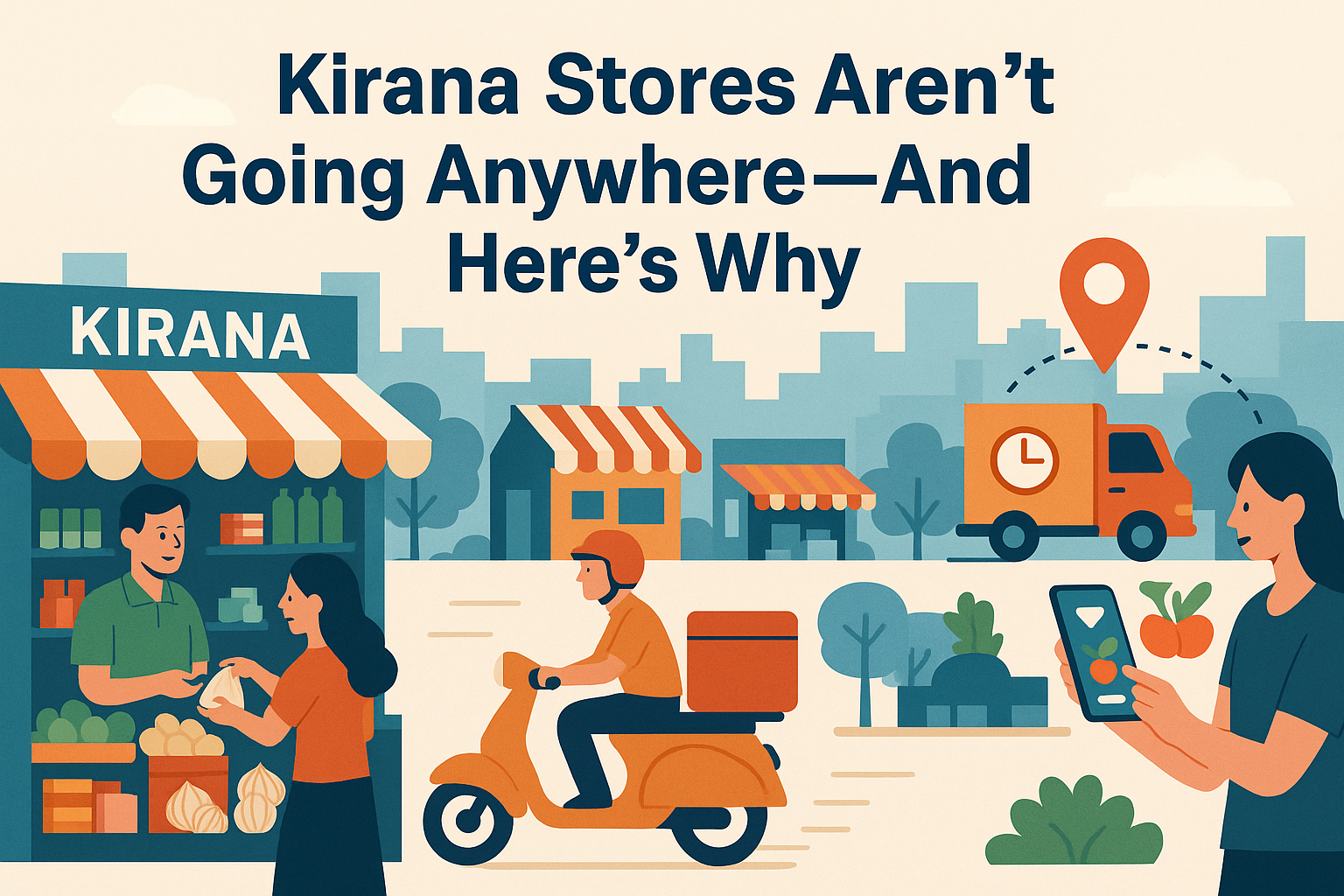Kirana Stores Aren’t Going Anywhere—And Here’s Why

In the flashy world of 10-minute deliveries and Gen-Z ordering groceries with emojis, it’s easy to assume India’s kirana stores are on borrowed time. After all, why wait at your local shop when Zepto or Blinkit can bring you a pack of chips before your kettle boils?
But here’s the twist: kiranas are not dying. In fact, they’re thriving quietly in the background, powering 90% of India’s grocery retail and serving a market that quick commerce still can’t crack.
The Market Everyone Forgets: Bharat > Bandra
Quick commerce is exploding—growing at 70–80% YoY, fueled by urban convenience and VC cash. But its primary user? Let’s call her Aditi—from Bandra, late 20s, working professional, ordering hummus and almond milk after a long day.
But India is full of Rahuls, Rams, and Ritas—who live in Tier-2 towns, run households on a tight budget, and shop almost daily in Rs. 5, Rs. 10, and Rs. 20 packs. These folks aren’t ordering Rs. 90 Dairy Milk bars off an app. They’re buying Rs. 5 packs of masala, Rs. 10 Britannia biscuits, and loose onions from the kirana next door.
Kiranas: Masters of Sachet Strategy
India’s consumer behavior has always been driven by small ticket, high frequency purchasing. The sachet revolution from the '80s still runs strong—whether it’s shampoo, chips, detergent, or cold drinks. Even FMCG majors are doubling down on LUPs (Low Unit Packs). Over 55% of Britannia’s sales come from small packs. Parle launched ‘Mini Frooti’ at Rs. 5. HUL makes billions off Rs. 1 and Rs. 5 SKUs. Guess who stocks them all? Your local kirana. Quick commerce, meanwhile, favors larger SKUs to boost Average Order Value (AOV). Rs. 5 Dairy Milk or Rs. 10 namkeen? Rarely found. A kirana has 10+ price points for every brand. Apps? Often just one.
Price Matters. A Lot.
Let’s talk onions. Literally.
Quick commerce: ₹61/kg
Supermarkets: ₹56/kg
Kiranas: ₹50/kg
Staples like pulses, oils, and veggies are still significantly cheaper at kiranas. And in a country where 90% of people earn under ₹24,000/month, ₹10 saved on onions matters more than a ₹10 delivery fee saved.
Home Delivery? Already There.
Think kiranas don’t deliver? Think again.
From WhatsApp orders to missed calls, kiranas have quietly mastered low-tech delivery. No app needed. No sign-up. No cart value minimums. They know your name, your brand preference, and your house number.
40% of a kirana’s orders are already home deliveries—done via walking boys or scooter fleets. And they’re profitable. Why? Zero CAC. Zero ops team. No 24x7 customer service chat.
Quick Commerce Isn’t Killing Kiranas. It’s Replacing Supermarkets.
The irony? Most customers switching to quick commerce aren’t coming from kiranas—they’re coming from supermarkets. A convenience-seeking, urban user base that never liked the long queues or weekend parking.
Kirana loyalists are still where they’ve always been—buying small, buying often, and trusting the guy behind the counter.
The Road Ahead
The battle isn’t kirana vs. quick commerce. It’s about who serves India’s next billion consumers better. Kiranas already have the trust, product-market fit, and micro-fulfillment muscle. Imagine what happens when they start plugging into tech—inventory management, digital payments, or even live pricing sync with FMCG distributors.
That’s where the real disruption lies.
TL;DR:
Quick commerce is fast. Kiranas are everywhere. The future isn’t about one replacing the other. It’s about learning to coexist—and perhaps collaborate. Because for all the buzz and burn, India still shops in sachets.



